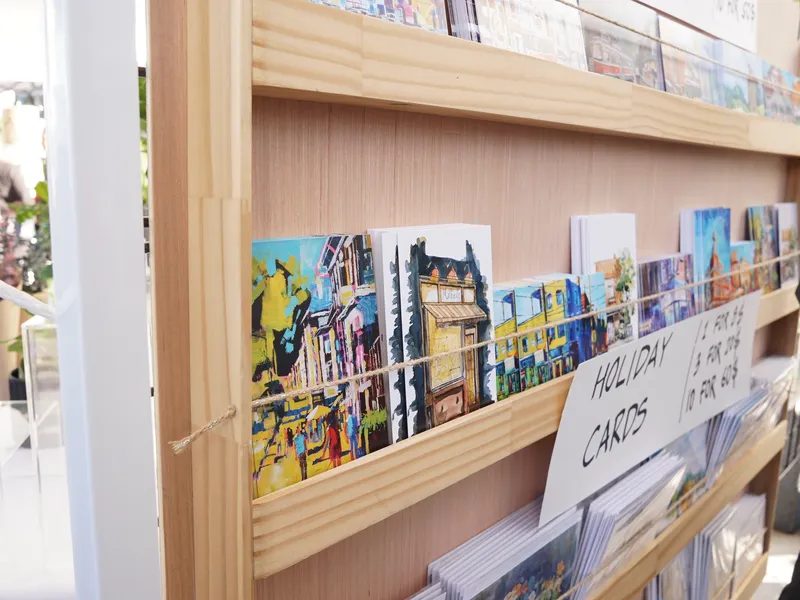
I asked a client who her customers are. She answered something along the lines of "people who like modern designs with bright colours". I was stumped for a brief moment because this wasn't a useful target to work with. The reason it's not useful is because it doesn't help us find these customers. If I gave you a task to sell products to people who liked modern designs with bright colours, where would you start? It's challenging, especially if a business is new to the market and you they understand your customers yet. Let's take a step back and think about this from the perspective of customers. If they were looking to buy a t-shirt, would they think "I want something that's modern and bright"? They might, but it's not very likely.
A question I would like to answer by writing this article is this: "Is style a specialization and to what extent from the customer's perspective?"
What does it mean to specialize?
Business experts persistently claim of the importance to specialize. And it's true. You will have a better chance of moving your company forward with a narrow focus, than a broader one. You might have heard of the phrase "find your niche". It's the same idea. There are many ways to specialize, but in general it's in two categories: subject matter and framework.
Subject matter refers to the what. What are you talking about? For example, I focus on supporting creative entrepreneurs who sell products online. Framework refers to the how. How do I support creative entrepreneurs? I build websites (specifically with Shopify). You can see how each component can be applied to many scenarios. The subject of 'support creative entrepreneurs' could have many other frameworks, such as business development training, a professional community, or taking courses to refine technical skills. The framework of 'building websites' could apply to any other subject, law firms, landscape companies, business coaches, educational institutions, restaurants, and so on.
Is style a type of specialization?
We've established that there are two key ways to specialize. What about style?
Wikipedia defines style as:
In the visual arts, style is a "... distinctive manner which permits the grouping of works into related categories" or "... any distinctive, and therefore recognizable, way in which an act is performed or an artifact made or ought to be performed and made".
Based on this definition, a style is what allows a group of work to be recognizable. When I see Umbra products out in the wild, even if I have never seen that product before, I can sense that it's an Umbra product.
They have a distinct and unique look. Uniqueness is extremely important for a business to exist and survive. You don't have to be really innovative and look alien from your peers, but you should look different enough to be noticed as your own entity. It could be small, maybe if you sell t-shirts, it's how you design the collars.
So, style can be a form of a specialization. But not all style specializations are helpful. Going back to what brought me to think about this topic, if you say your customers are people who prefer your style, this is only useful if we can find a community around it. If you create designs inspired by skateboarding culture, then that's very actionable. You can find communities on Reddit, Instagram, Facebook, and Meetup where people gather around skateboarding. Offer free products for them to try out, or maybe sponsor a program. These are concrete things you can do with the style you choose to specialize in. Note that skateboarding culture in this case is a subject matter; the style is very closely tied to what the subject is.
How do I sell and advertise my style?
Here's a question I saw on Facebook:
"How do I advertise a style, not a niche? I have a strong style, but not a niche. It makes my marketing quite difficult! I’d love tips on that...I have a colorful style, I use a lot of impasto, texture, etc. A lot of people recognize my style from far! But I do all sorts of subjects so I can’t market like “seascape” “urban” etc. No niche."
An artist's style is not necessarily a choice. It's something that comes from an innate place and it is unique to each person. In cases when you can't find a community of people around your style, then break it down into concrete bits. What is the age range of people who likes your style? If you have a wide range, focus on the one where you tend to see more sales from. What about your style appeals to them? Why your designs? This is where it becomes very important to talk to your existing customers. I teach clients to be customer-centric and part of that is conducting customer research. Reach out to some customers who bought your products on Instagram, or even offer a discount in your email if they can spare some time sharing feedback.
An alternative to this approach is to create a community of people who enjoy your work. This approach focuses on giving value to an audience, rather than focusing on people as customers. There are two main ways to get people to buy your stuff.
- Create amazing content that gives value to your audience: This is easier said than done, and the model for this requires a lot of time investment with very little financial returns. Building an audience takes consistent effort in putting out content. Once you have a strong following of people who like to engage with your content and trust you, you can sell them your products. Your products don't have to be very innovative, simple things like a t-shirt will be enough. Take note that building an audience can take months and sometimes years of work. There are a lot of creatives on Instagram and YouTube you can study. Do a search of your subject area and look for how people got to a certain follower milestone.
- Create a product that fixes painful problems: People in this world have a lot of problems that occur on a daily basis. They want the pain to be alleviated, but might not know what the solution is. If you can create something to make their life easier and help them determine that your product will solve their problems, then you have found a customer.
The first method best suits creatives who want to sell their style, and build a new community around their work. Once again, this is hard to achieve and requires a lot of patience. It is also demanding of time. You could always give this a try without expectations for a few months and see if it's something you want to pursue more seriously. The most important thing to think about in this situation is to consider who would most benefit from your content and how you could give them value. You need to consistently ask these two questions until you have more confidence with it.
Style is the final layer of specialization
To sum this up, style is a specialization. But, I would consider it to be the final layer of specialization outside of subject matter and framework. Style is the first thing people interact with, but it's the last thing you mature with as a business. You will pull in customers with your style, but you need a great subject matter to make them stay.
If you have thoughts about this article, share your thoughts with me by sending me an email . I love hearing from readers.
Comments






